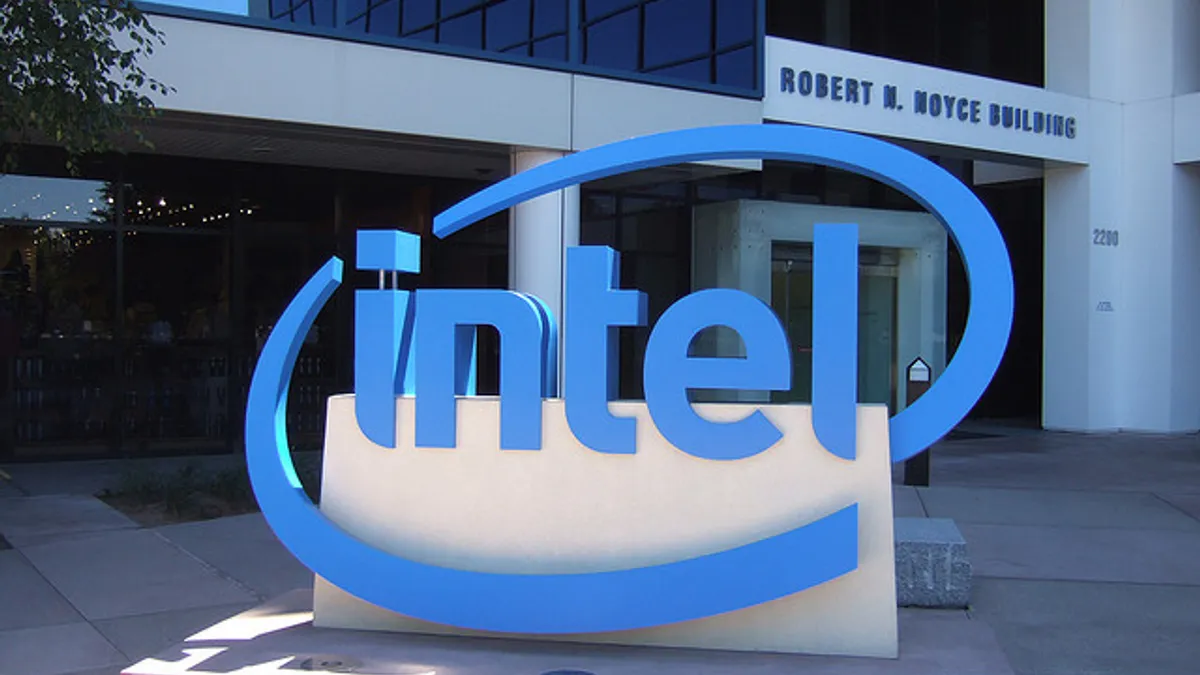Dive Brief:
- Intel Corp. announced that it has reached "full representation" with its diversity targets two years ahead of schedule, The Wall Street Journal reported. The tech company said its workforce now mirrors the current talent pool, which is 27% female, 9.2% Hispanic and slightly under 5% African American. According to WSJ, those percentages don't correlate with the overall U.S. population or the workforce at large, but Intel called meeting its goal a first step toward gaining broader diversity.
- Intel said it bases "full representation" on talent availability, which is data extracted from various sources, including its own internal information, the U.S. Census Bureau and university graduation rates from the National Center for Education Statistics. WSJ said that Intel's calculations are like those of other tech companies struggling to broaden its labor force beyond White and Asian men, especially in leadership roles. Though Joelle Emerson, founder and CEO of Paradigm, a diversity and inclusion company, called Intel's efforts less than "aspirational," she credited the company for setting diversity goals at all.
- Barbara Whye, Intel's chief diversity and inclusion officer, told WSJ that the company has incorporated diversity and inclusion goals into its core business; 45% of hiring must be "diverse hiring," the exit rate of "diverse" workers must be less than 0.5% of the majority staff, and 7% of all employees bonuses are tied to hiring and retention targets.
Dive Insight:
Intel's "full representation" announcement also points to a wider industry struggle — that most talent pipelines may not be currently built to encourage the growth of minorities in tech thanks to a number of inequities, including access to skills education or pay equity issues.
Without inclusion — the process of making under-represented employees feel they belong in an organization and have the same career advancement and promotional opportunities as any other employee — diversity efforts can fall flat. Whye admitted that after Intel adopted diversity and inclusion (D&I) initiatives, the rate of Hispanic and African-American workers leaving the company slowed down, and that she discovered that "diverse" employees were being overlooked for promotions because they tended to go through the formal application process for internal positions, unlike other employees, who used informal networks to advance.
Employers, especially tech companies that say they're trying to make inroads in D&I, can effectively measure their progress. For example, Diversity Best Practices (DBP), a Working Mother Media division, evaluates companies' (D&I) performance. DBP released its first Inclusion Index, which evaluates companies' D&I efforts. Thirty-three companies already have taken top spots on the index, which rated them on how well they provide data and insight The companies are rated on demographic transparency; best D&I practices; company culture; and recruitment, retention and advancement. With the tech industry providing a few of the highest paying jobs, D&I lapses in tech companies are troubling. Any company struggling with meeting diversity goals might use the index as a means of improving its performance in these areas.
Numerous studies show that a diverse workplace scores higher on most business metrics. Maintaining D&I, however, isn't a one-time, single-dimensional goal; it's a continuous process requiring an occasional audit and on-going monitoring.












